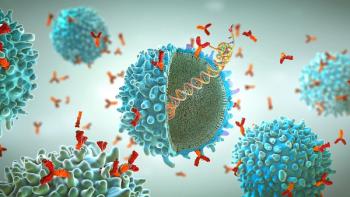
- BioPharm International-07-01-2016
- Volume 29
- Issue 7
Microbiological Testing: Time is of the Essence
Pressures to accelerate current and next-gen therapies are challenging traditional microbiological testing methods.
Effective microbiological testing during biopharmaceutical drug development and manufacturing is crucial for ensuring sterility, determining antimicrobial effectiveness, detecting microbial contamination or bioburden levels, analyzing endotoxins, and implementing environmental monitoring programs. Growing pressures to increase productivity, flexibility, and cost-effectiveness and the unique properties of many next-generation therapies are challenging today’s microbiologists.
Conventional protocols no longer suitable for traditional biologics
Microbiology testing of pharmaceutical products is performed with a view to detection, enumeration, and identification of microbial contaminants, according to Marian McKee, senior director of BioReliance operational development services at MilliporeSigma. Traditional microbiological methods for sterility testing take 14 days from inoculation to detection and conclusive results, while culture-based methods for mycoplasma take 28 days. “The time to obtain results for these traditional microbiological test methods is lengthy,” McKee notes.
For release of traditional biologics that are produced in large lots with longer stability profiles, the turnaround time on conventional microbiological tests, which are sensitive and robust, is not a concern with respect to the ability to obtain reliable results. The faster release of bulk drug substances and batches during in-process testing, however, is desirable. “More rapid alternatives to traditional methods are needed to speed the manufacturing process while ensuring process and product safety,” says McKee.
Protein-based biologic drugs can also present real technical challenges with respect to reading assay results. “Occasionally the therapeutic molecule can have toxic effects on the detector cells that are used to detect viruses in in-vitro assays that comply with ICH Q5A (1) and related regulatory guidelines,” observes Archie Lovatt, scientific director of biosafety for SGS. He does add, however, that this issue can usually be overcome by dilution of the sample. Results of the tests performed on diluted samples can also be supported by viral clearance data generated during process development.
For biopharmaceutical manufacturers including contract manufacturers that produce many different products, the time and resources involved in performing required microbial testing is a challenge, says Aaron Ortiz, QC manager of microbiology at GSK Biologics’ GMS Rockville site. “Qualifying the bioburden method for each step of each process is extremely time consuming. In addition, the many different matrices of the different in-process samples lead to challenges with recovery of different organisms depending on the process step,” he explains.
Next-gen therapies have unique needs
The lengthy time to obtain results for traditional microbiological test methods, while not a technical issue for more stable proteins, antibodies, and other older types of biologics, is typically unacceptable for newer cell-based therapeutics. “Some next-generation products have short shelf lives and require novel technologies to detect microbes that are more rapid than traditional methods,” says Lovatt. Cellular- and gene-therapy products, which not only have short shelf lives, but also nontraditional lot sizes, are driving the need for rapid microbiological methods (RMMs) to reduce testing times and sample volumes, agrees McKee.
In addition, for cellular therapies that involve the modification of patient cells followed by their injection back into the patient, the process is typically completed within just a few days. As a result, Lovatt points out that the use of contract research organizations/third-party testing laboratories may not be practical. “Microbiological testing for these therapies may need to be performed at the production site in order to avoid additional delays due to the need for the shipment of samples,” he says.
Ortiz also notes that developing and implementing appropriate technologies for the detection of organisms in many of the new types of biologic drug substances and drug products classified as next-generation therapies is also a challenge.
Vaccines drive test development
The need for a rapid response to a possible influenza pandemic in the first decade of the 2000s spurred the development of RMMs, according to McKee. Alternative strategies for in-process release of vaccine batches were needed to accelerate production of flu vaccines, with the 14-day sterility test seen as a prime target for decreasing the turnaround time.
The high cell content in many vaccine batches can also interfere with the ability to visually read traditional test results. “Alternative test methods based on detection of metabolites or luminescence have been developed that can overcome this obstacle.” McKee notes.
Viral vaccines in particular can cause challenges due to the need to generate neutralizing antisera to neutralize the cytopathic effect of the vaccines on the cells that are used to detect viruses/mycoplasma, such as MRC-5 and Vero, etc. “The generation of the antisera can significantly extend the time required for the testing process and, consequently, manufacturing of viral vaccines,” says Lovatt.
Influenza vaccines, for example, must be manufactured in a very limited time due to their seasonal nature, and it is not possible to generate antisera quickly enough. As a result, microbiological testing using rapid nucleic acid methods is allowed in the pharmacopeias, while polymerase chain reaction (PCR) methods for mycobacteria detection, which typically take one week, can be used as alternatives to traditional culture-based methods, which take up to 56 days, according to Lovatt. Nucleic acid testing is also an effective alternative for microbial testing of viral vaccines for which the viral drug substance is difficult to neutralize.
Regulatory flexibility can be beneficial
Significant changes to regulatory requirements for microbial testing have, in fact, been crucial for accelerating the adoption of more advanced methods. As mentioned previously, the pharmacopeias have added chapters to address the needs of next-generation therapies for RMMs that can assure product safety. McKee points to the European Pharmacopoeia (Ph. Eur.) chapters 2.6.7 Mycoplasmas and 2.6.27 Microbiological Control of Cellular Products as two important examples. Ph.Eur. 2.6.27 outlines an alternative to traditional compendial sterility testing. “The 2.6.27 method is suitable for qualification and validation of rapid methods for sterility testing and incorporates conditions and control organisms that yield a more sensitive and broader range of detection for cellular products,” she explains. Ph.Eur. 2.6.7 Mycoplasmas, meanwhile, includes specific guidance for validation of nucleic acid amplification techniques (NAT) that may be used as alternatives to the 28-day culture and indicator cell methods for detection of adventitious mycoplasmas.
In addition, FDA has made changes to its microbial testing requirements that have had a positive impact on the development of more rapid, advanced microbiological methods (2). Amendments to the Sterility Test for Biological Products rule (21 Code of Federal Regulations 610.12), which establishes FDA’s microbiological testing requirements for biological products, have been particularly important, according to McKee. “The changes to the rule provide manufacturers of biologic products greater flexibility. Biopharmaceutical manufacturers are in fact encouraged to use the most appropriate and state-of-the-art test methods to assure the safety of biologic products,” she explains.
In addition, McKee notes that the changes to the rule promote innovation in the development of sterility testing and are thus paving the way for the use of novel methods such as adenosine triphosphate (ATP) bioluminescence, chemiluminescence, and even non-growth based RMMs. “Not only was the use of a mandated method for sterility testing removed, the change in the rule allows greater flexibility in sampling, putting the onus of sample size on the manufacturer; the sample must be appropriate to the material tested both in volume and representation of the lot size,” she says.
There are some changes to regulations that have created challenges, however. Ortiz points to the relatively recent low endotoxin recovery (LER) phenomenon. For biologics, FDA is requesting studies to determine if drug substances or drug products demonstrate LER when performing endotoxin analyses (3). Due to the recent discovery of this phenomenon and the various formulations of drug substances and drug products, there have been difficulties in developing proper studies for LER.
Rapid solutions: automated vs. alternative
The development of new test methods has been pursued using two fairly different strategies. Some methods are still culture-based, but with automation to help accelerate the process. Others involve completely new testing technologies.
“Some automated RMMs use a culture phase coupled with an automated end-point to reduce the overall testing time, but are still in keeping with the traditional tests described in the compendia. Alternative methods, on the other hand, are different from traditional methods and often do not incorporate a culture phase,” McKee says. The results for alternative methods are also often reported in units other than colony forming units (CFUs), which is the typical format for culture-based assays. The results of these tests, therefore, are not directly comparable with those obtained using traditional or automated growth-based methods, according to McKee.
“The prevailing concern is that these alternative methods require extensive validation studies to demonstrate equivalency to traditional microbiological methods. The need for such extensive method validation in addition to the capital expenditures necessary to develop and implement these new technologies poses a hurdle for most biopharmaceutical manufacturers that wish to employ rapid microbial methods,” McKee concludes. The strong value proposition that RMMs offer, however, extends to the development of assays targeting other adventitious contaminants including viruses, mycoplasmas, residual DNA, and residual proteins. Assays that can be performed near the bioreactor location and in real time are definitely the assays for the future.
References
1. International Council for Harmonisation, Q5A (R1) Viral Safety Evaluation of Biotechnology Products Derived from Cell Lines of Human or Animal Origin (September 1999).
2. FDA, “FDA issues final rule on sterility testing of biological products,” Press Release, May 3, 2012.
3. K. Williams, BioPharm International, 28 (7) 28-33 (2015).
Article DetailsBioPharm International
Vol. 29, No. 7
Page: 6
Citation
When referring to this article, please cite it as C. Challener, Microbiological Testing: Time is of the Essence," BioPharm International 29 (7) 2016.
Articles in this issue
over 9 years ago
Bio/Pharma Funding Challenges Could Hurt CDMOs in 2017over 9 years ago
Design and Qualification of Single-Use Systemsover 9 years ago
Managing Biomanufacturing Capacity Expectationsover 9 years ago
Recognizing Biopharma Industry Excellenceover 9 years ago
Modular Bioreactor Simplifies Process Developmentover 9 years ago
FDA and Manufacturers Intensify Concerns about Data Integrityover 9 years ago
Forced Degradation Studies for BiopharmaceuticalsNewsletter
Stay at the forefront of biopharmaceutical innovation—subscribe to BioPharm International for expert insights on drug development, manufacturing, compliance, and more.




